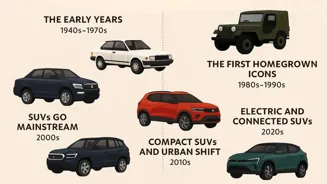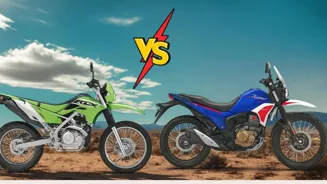What is the story about?

TVS Motor is gearing up to introduce its first 150cc sporty scooter, the Ntorq 150, likely in September – exciting times for all enthusiasts of Indian
two-wheelers. Teaser highlights fierce quad-projector LED headlights with a characteristic T-shaped DRL along with the tag “Feel the Thrill Like Never Before.” Latest talks among the circles predict that the Ntorq 150 is going to come laden with a 12 hp 150cc CVT engine, 14-inch alloy wheels, and a 5-inch TFT screen- all features borrowed from its Ntorq 125 sibling. With rivals like the Yamaha Aerox 155 and Hero Xoom 160 in its sights, this launch could reshape India’s sporty scooter segment. Also Read: Mahindra Vision.T Concept — Could This Be The Electric Thar We’ve Been Waiting For?
TVS Ntorq 150: What We Know So Far?
The most recent teaser reveals that the TVS Ntorq 150 will stick very close to the brand’s sporty design language. Its headlamp gets twin LED units separated by a rather bold T-shaped DRL, a signature detail also found on the Ronin. Not much of the scooter has been revealed yet, but it can be assumed that the front apron will get sharply sculpted lines to match with the aggressive stance of the Ntorq 125.Powering the Ntorq 150 will be a bigger 150cc engine, although whether this would be derived from the current 125cc mill or completely different is not certain yet. Anyways, it can be expected to have received sporty tuning to suit its dynamic character.
Specs have not been spilled yet, but it is expected that they will show up with a TFT digital console featuring SmartXonnect integration, full-LED lighting, Bluetooth connectivity, turn-by-turn navigation, different ride modes to play with, and ABS to keep things safe.
Also Read: Triumph Thruxton 400 vs Speed 400: Price, Engine Specs, and Hardware Compared
The Ntorq 150 from TVS is likely going to be priced from Rs 1.30 lakh (ex-showroom). With very little information coming out of TVS, it is surely raising the anticipation bar quite high for the official launch of this exciting new model.
Do you find this article useful?















